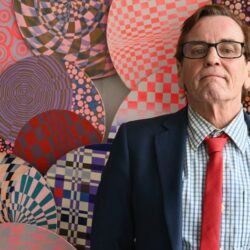Unequal America: Causes and consequences of the wide—and growing—gap between rich and poor
This is an extract from a post originally published in Harvard Magazine.
When Majid Ezzati thinks about declining life expectancy, he says, “I think of an epidemic like HIV, or I think of the collapse of a social system, like in the former Soviet Union.” But such a decline is happening right now in some parts of the United States. Between 1983 and 1999, men’s life expectancy decreased in more than 50 U.S. counties, according to a recent study by Ezzati, associate professor of international health at the Harvard School of Public Health (HSPH), and colleagues. For women, the news was even worse: life expectancy decreased in more than 900 counties—more than a quarter of the total. This means 4 percent of American men and 19 percent of American women can expect their lives to be shorter than or, at best, the same length as those of people in their home counties two decades ago.
The United States no longer boasts anywhere near the world’s longest life expectancy. It doesn’t even make the top 40. In this and many other ways, the richest nation on earth is not the healthiest. Ezzati’s finding is unsettling on its face, but scholars find further cause for concern in the pattern of health disparities. Poor health is not distributed evenly across the population, but concentrated among the disadvantaged.
Disparities in health tend to fall along income lines everywhere: the poor generally get sicker and die sooner than the rich. But in the United States, the gap between the rich and the poor is far wider than in most other developed democracies, and it is getting wider. That is true both before and after taxes: the United States also does less than most other rich democracies to redistribute income from the rich to the poor.
Americans, on average, have a higher tolerance for income inequality than their European counterparts. American attitudes focus on equality of opportunity, while Europeans tend to see fairness in equal outcomes. Among Americans, differences of opinion about inequality can easily degenerate into partisan disputes over whether poor people deserve help and sympathy or should instead pull themselves up by their bootstraps. The study of inequality attempts to test inequality’s effects on society, and it is delivering findings that command both sides’ attention.
Ezzati’s results are one example. There is also evidence that living in a society with wide disparities—in health, in wealth, in education—is worse for all the society’s members, even the well off. Life-expectancy statistics hint at this. People at the top of the U.S. income spectrum “live a very long time,” says Cabot professor of public policy and epidemiology Lisa Berkman, “but people at the top in some other countries live a lot longer.” Much is still unknown in this dynamic field, where Harvard is home to pioneers who first recognized income inequality as worthy of study and younger scholars at the forefront of its study today. The variety of disciplines featured in presentations of the University’s Multidisciplinary Program on Inequality and Social Policy—economics, sociology, political science, public policy, health, medicine, education, law, and business—highlights the field’s broad importance.






















































































